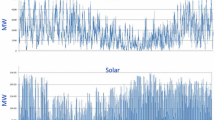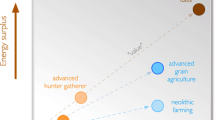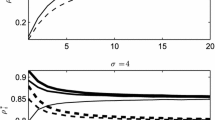Abstract
The intermittent nature of wind energy generation has introduced a new degree of uncertainty to the tactical planning of energy systems. Short-term energy balancing decisions are no longer (fully) known, and it is this lack of knowledge that causes the need for strategic thinking. But despite this observation, strategic models are rarely set in an uncertain environment. And even if they are, the approach used is often inappropriate, based on some variant of scenario analysis—what-if analysis. In this paper we develop a deterministic strategic model for the valuation of electricity storage (a battery), and ask: “Though leaving out wind speed uncertainty clearly is a simplification, does it really matter for the valuation of storage?”. We answer this question by formulating a stochastic programming model, and compare its valuation to that of its deterministic counterpart. Both models capture the arbitrage value of storage, but only the stochastic model captures the battery value stemming from wind speed uncertainty. Is the difference important? The model is tested on a case from Lancaster University’s campus energy system where a wind turbine is installed. From our analysis, we conclude that considering wind speed uncertainty can increase the estimated value of storage with up to 50 % relative to a deterministic estimate. However, we also observe cases where wind speed uncertainty is insignificant for storage valuation.






Similar content being viewed by others
Notes
A CHP is a gas driven energy unit that generates electricity and heat simultaneously.
Wind turbine Model E-70 manufactured by ENERCON GmbH; further technical information available at http://www.enercon.de (accessed on July 31, 2013).
\(\xi _{{wind}}(v)=0.0498v^5 -2.5155v^4 +44.91v^3 -336.68v^2 +1165.9v-1480.5\).
Prudent Energy’s standard VRB-ESS MW-Class module. This 250 KW battery is designed for the support of renewable energy integration for micro grids.
Note that the solution lives on a scenario tree like the one in Fig. 3.
The wind speeds data stem from an anemometer height lower than the wind turbine height. To account for this difference, we follow a process noted in Sharma et al. (2013).
Due to the complexities associated with the calculations of the multi-stage stochastic setting, the pie charts numbers come from the expected cases. The idea is to simply illustrate and qualitatively note that ‘wind value %’ causes uncertainty on storage decisions.
References
Ahlert K, van Dinther C (2009) Sensitivity analysis of the economic benefits from electricity storage at the end consumer level. In: PowerTech, 2009 IEEE Bucharest, pp 1–8
Banham-Hall D, Taylor G, Smith C, Irving M (2012) Flow batteries for enhancing wind power integration. IEEE Trans Power Syst 27(3):1690–1697
Brown P, Lopes JP, Matos M (2008) Optimization of pumped storage capacity in an isolated power system with large renewable penetration. IEEE Trans Power Syst 23(2):523–531
Bruninx K, Delarue E, Dhaeseleer W (2014) A modeling framework for the integration of intermittent renewables: stochastic unit commitment. TME Working paper, WP EN2014-1, KU Leuven Energy Institute
Carbon Connect (2012) Distributed generation: from Cinderella to centre stage. Technical report, Policy Connect
Cardoso G, Stadler M, Siddiqui A, Marnay C, DeForest N, Barbosa-Pvoa A, Ferro P (2013) Microgrid reliability modeling and battery scheduling using stochastic linear programming. Electr Power Syst Res 103:61–69
Castronuovo ED, Lopes JAP (2004) Optimal operation and hydro storage sizing of a wind hydro power plant. Int J Electr Power Energy Syst 26(10):771–778
Conejo AJ, Carrin M, Morales JM (2010) Decision making under uncertainty in electricity markets., International series in operations research and management science, Springer, New York
Crespo Del Granado P, Wallace SW, Pang Z (2014) The value of electricity storage in domestic homes: a smart grid perspective. Energy Syst 5(2):211–232
DECC (2013) UK renewable energy roadmap update 2013. Technical report, Department of Energy and Climate Change
ELEXON-Ltd (2010–2011) The balancing mechanism reporting system, the new electricity trading arrangements, electricity historic prices. [Online] http://www.bmreports.com
EPRI (2010) Electricity energy storage technology options: a white paper primer on applications, costs, and benefits. Technical report, Electric Power Research Institute
European Commission (2014) A policy framework for climate and energy in the period from 2020 to 2030. Technical report, Eurpean Union
Eyer J, Corey G (2010) Energy storage for the electricity grid: Benefits and market potential assessment guide. Technical report, Sandia National Laboratories
Garcia-Gonzalez J, Ruiz de la Muela R, Santos L, Gonzalez A (2008) Stochastic joint optimization of wind generation and pumped-storage units in an electricity market. IEEE Trans Power Syst 23(2):460–468
Hanna R, Kleissl J, Nottrott A, Ferry M (2014) Energy dispatch schedule optimization for demand charge reduction using a photovoltaic-battery storage system with solar forecasting. Solar Energy 103:269–287
Harsha P, Dahleh M (2015) Optimal management and sizing of energy storage under dynamic pricing for the efficient integration of renewable energy. IEEE Trans Power Syst 30(3):1164–1181
Hatziargyriou N, Asano H, Iravani R, Marnay C (2007) Microgrids. Power Energy Mag IEEE 5(4):78–94
Hazelrigg Weather Station (2006–2011) Historical wind speed data sets on half hour basis. Lancaster University Enviromental Center. http://www.es.lancs.ac.uk/Hazelrigg/
He X, Delarue E, D’Haeseleer W, Glachant J-M (2011) A novel business model for aggregating the values of electricity storage. Energy Policy 39(3):1575–1585
Hittinger E, Whitacre J, Apt J (2012) What properties of grid energy storage are most valuable? J Power Sources 206:436–449
IBM (2012) ILOG CPLEX (version 12). [Online] http://www.ibm.com/developerworks/downloads/ws/ilogcplex/. [Software]
Kear G, Shah AA, Walsh FC (2012) Development of the all-vanadium redox flow battery for energy storage: a review of technological, financial and policy aspects. Int J Energy Res 36(11):1105–1120
Kim JH, Powell WB (2011) Optimal energy commitments with storage and intermittent supply. Oper Res 59(6):1347–1360
King AJ, Wallace SW (2012) Modeling with stochastic programming. Springer, Springer Series in Operations Research and Financial Engineering
Korpaas M, Holen AT, Hildrum R (2003) Operation and sizing of energy storage for wind power plants in a market system. Int J Electr Power Energy Syst 25(8):599–606
Küchler C (2009) Stability, approximation, and decomposition in two- and multistage stochastic programming., Stochastic programming, Springer, New York
Lancaster University (2011) Lancaster University carbon management plan 2009–2012. Technical report, Lancaster University Facilities Department
Mathworks (2012) MATLAB R2012b (version 8). [Online] http://www.mathworks.com/products/matlab/. [Software]
Mishra A, Irwin D, Shenoy P, Kurose J, Zhu T (2012) Smartcharge: cutting the electricity bill in smart homes with energy storage. In: Proceedings of the 3rd international conference on future energy systems, e-Energy, pp 29:1–29:10. ACM
Mokrian P, Stephen M (2006) A stochastic programming framework for the valuation of electricity storage. The 26th USAEE/IAEE North American Conference. Michigan, USA, Ann Arbor, pp 24–26
Moreno R, Moreira R, Strbac G (2015) A MILP model for optimising multi-service portfolios of distributed energy storage. Appl Energy 137:554–566
Nyamdash B, Denny E, O’Malley M (2010) The viability of balancing wind generation with large scale energy storage. Energy Policy 38(11):7200–7208
Prudent Energy group (2011) Storage for a sustaniable future, product brochure. [Online] http://www.pdenergy.com
Roberts B, Sandberg C (2011) The role of energy storage in development of smart grids. Proc IEEE 99(6):1139–1144
Schütz P, Tomasgard A (2011) The impact of flexibility on operational supply chain planning. Int J Prod Econ 134(2):300–311. ‘Robust Supply Chain Management’
Scott W, Powell W (2012) Approximate dynamic programming for energy storage with new results on instrumental variables and projected bellman errors. Working paper, Princeton University
Sharma KC, Jain P, Bhakar R (2013) Wind power scenario generation and reduction in stochastic programming framework. Electr Power Compon Syst 41(3):271–285
Sioshansi R, Denholm P, Jenkin T, Weiss J (2009) Estimating the value of electricity storage in PJM: arbitrage and some welfare effects. Energy Econ 31(2):269–277
Sundararagavan S, Baker E (2012) Evaluating energy storage technologies for wind power integration. Solar Energy 86(9):2707–2717
Teh NJ, Goujon G, Bortuzzo G, Rhodes A (2011) UK smart grid capabilities development programme. Technical report,Energy Generation and Supply, Knowledge Transfer Network
Torres J, Garca A, Blas MD, Francisco AD (2005) Forecast of hourly average wind speed with ARMA models in Navarre (Spain). Solar Energy 79(1):65–77
United States Department of Energy (2013) DOE international energy storage database. [Online] http://www.energystorageexchange.org
Vespucci MT, Maggioni F, Bertocchi MI, Innorta M (2010) A stochastic model for the daily coordination of pumped storage hydro plants and wind power plants. Ann Oper Res 193(1):91–105
Walawalkar R, Apt J, Mancini R (2007) Economics of electric energy storage for energy arbitrage and regulation in New York. Energy Policy 35(4):2558–2568
Weber C, Meibom P, Barth R, Brand H (2009) Wilmar: a stochastic programming tool to analyze the large-scale integration of wind energy. In: Kallrath J, Pardalos P, Rebennack S, Scheidt M (eds) Optimization in the energy industry, energy systems. Springer, Berlin, pp 437–458
Acknowledgments
We thank the Facilities Department at Lancaster University for providing information on the campus energy system as well as electricity demand data. Likewise, to the Lancaster Environmental Center for sharing high frequency data on historical wind speeds. Lastly, our acknowledgements to the Department of Management Science at Lancaster University and the Department of Business and Management Science at The Norwegian School of Economics for facilitating research visits.
Author information
Authors and Affiliations
Corresponding author
Rights and permissions
About this article
Cite this article
Crespo Del Granado, P., Wallace, S.W. & Pang, Z. The impact of wind uncertainty on the strategic valuation of distributed electricity storage. Comput Manag Sci 13, 5–27 (2016). https://doi.org/10.1007/s10287-015-0235-0
Received:
Accepted:
Published:
Issue Date:
DOI: https://doi.org/10.1007/s10287-015-0235-0




